Health
Despite growing concerns over bird flu, many US dairy workers have not received protective equipment
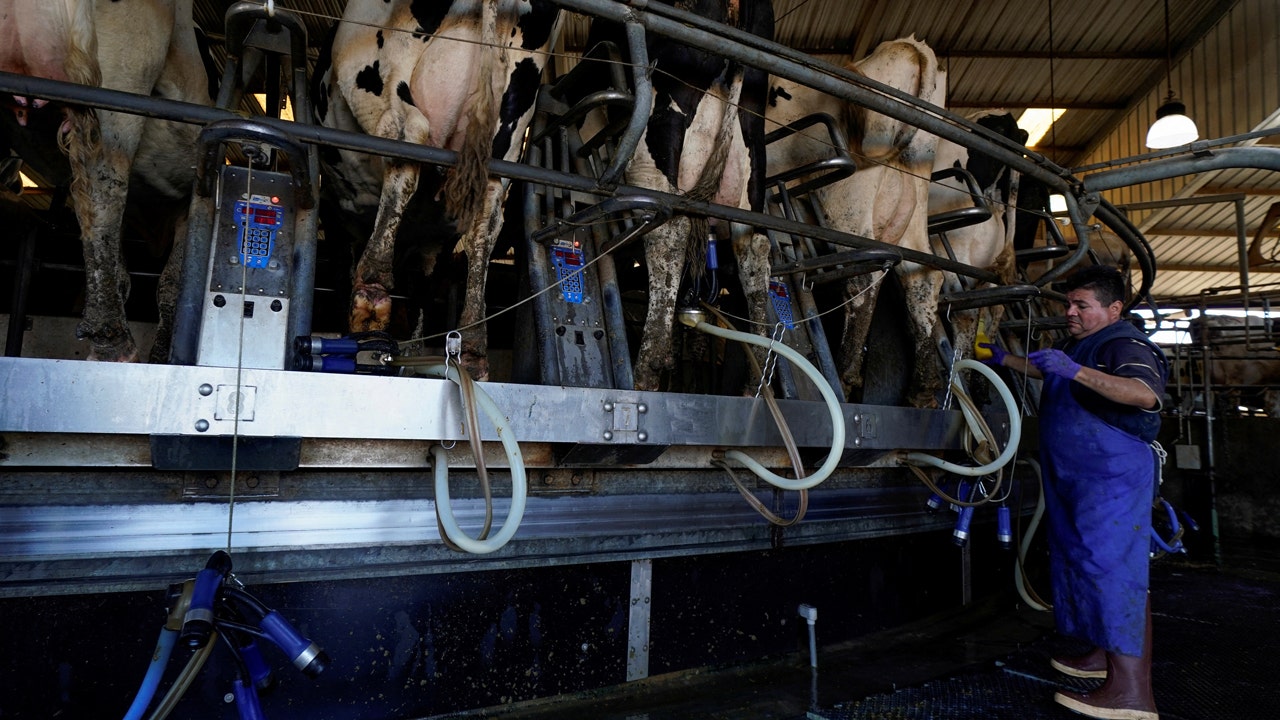
CDC issues alert over bird flu case
Fox News medical contributor Dr. Marc Siegel on what to know about bird flu and why it is important to not look directly at the solar eclipse without proper glasses
- Despite growing concern about bird flu, many U.S. dairy farms have not increased health protections for employees.
- On May 22, 2024, the U.S. government said a second dairy worker has contracted bird flu since cattle first tested positive in late March.
- The U.S. Department of Agriculture said it believes unpasteurized milk is the primary vector for transmitting the virus in cows, though officials do not know exactly how it spreads.
Many U.S. dairy farms have not yet increased health protections against bird flu for employees during an outbreak in cows, according to workers, activists and farmers, worrying health experts about the risk for more human infections of a virus with pandemic potential.
Epidemiologists are concerned the virus could potentially spread and cause serious illnesses as farmers downplay the risk to workers while employees are not widely aware of cases in U.S. cattle.
The U.S. government said on Wednesday that a second dairy worker contracted bird flu since cattle first tested positive in late March and that investigators are looking into whether the person was wearing or offered protective equipment.
AUSTRALIA REPORTS NEW BIRD FLU CASE AT POULTRY FARM AS GLOBAL CONCERNS RISE
Nearly 24,000 farms sell milk around the country, and they offer varying protections to staff. Lobby group the National Milk Producers Federation said it encouraged farms to use protective equipment in line with federal recommendations and heard of increased worker protections.
Three dairy workers, seven activists and two lawyers who assist farm employees told Reuters that dairy owners have not offered equipment like face shields and goggles to staff who spend 10- to 12-hour days side-by-side with cows. Three large dairy companies with tens of thousands of cows declined to comment on their procedures.
The workers – all based in New York, a major dairy producer – said they heard of the new illness affecting cattle through the media or community organizers, not their employers. One, 39-year-old Luis Jimenez from Mexico, said last week it was business as usual.
A worker using an automated machine helps milk Holstein cows at Airoso Circle A Dairy in Pixley, California, on October 2, 2019. Workers who attach and detach milking equipment to cows get their faces close to unpasteurized milk. The U.S. Department of Agriculture said it believes unpasteurized milk is the primary vector for transmitting the virus in cows. (Reuters/Mike Blake/File Photo)
“They’re not doing anything,” he said.
The U.S. Centers for Disease Control and Prevention in April and May advised workers to use personal protective equipment (PPE) if they may be exposed to sick livestock, after a Texas dairy worker tested positive for bird flu. On May 6, the agency asked states to make equipment available to workers.
CDC wants “to make sure that farm workers across the country, whether they are at a farm with an affected herd or not, have access to PPE,” said Nirav Shah, principal deputy director, last week.
New York state said it is assessing CDC’s recommendation and has not yet distributed equipment. Texas, New Mexico and Colorado, where cattle were infected, said they distributed equipment to eight dairies combined. Kansas, Idaho and Wisconsin said they have equipment, but no farmers asked for it.
Michigan, where the second dairy worker tested positive, said many farms have protective gear but the state is coordinating a way to make it available for those that need more.
Dairies became more aware of bird flu’s risks in late April after the U.S. government began requiring that cows test negative before crossing state lines, said Emily Yeiser Stepp, who oversees a National Milk Producers Federation program that covers workforce development.
Still, “reaching out into some of our rural networks takes a little longer,” she said when told of workers who said they were not informed of recommendations for protective equipment.
CLOSE CONTACT WITH COWS
The U.S. confirmed bird flu in dairy cattle in nine states. Scientists have said they believe the outbreak is more widespread based on findings of H5N1 particles in about 20% of retail milk samples.
Bird flu has caused serious or fatal infections globally among people in close contact with wild birds or poultry. In cows, the U.S. Department of Agriculture said it believes unpasteurized milk is the primary vector for transmitting the virus, though officials do not know exactly how it spreads.
Health experts advise dairy workers to wear gloves and disposable coveralls that can block milk splashes on their bodies or clothing.
Jimenez said his coworkers are under pressure to work so quickly that they sometimes do not have time to wash their hands before meals and often drive home in their work clothes.
Workers attach and detach milking equipment on cows, putting their faces close to unpasteurized milk. Most are immigrants and many do not have health insurance.
“When you’re milking, splashes can’t be avoided. When it splashes in our eyes, we wash it out with water,” said another New York worker, who requested anonymity because he is undocumented.
Lucas Sjostrom, a farmer and executive director of the Minnesota Milk Producers Association, uses robotic machines to attach milking equipment to cows, but said he is being extra conscious that human workers wear gloves while transporting unpasteurized milk. Minnesota has not reported bird flu in cows.
In Indiana, another state without confirmed cases, farmer Steve Obert said he has not increased precautions for workers, though that could change if his herd tests positive. Extra protective equipment is not comfortable to wear, he added.
“We’re rather isolated and I don’t think the risk is really great,” said Obert, executive director of the industry group Indiana Dairy Producers.
BLOOD-RED EYES
The infected Texas worker suffered conjunctivitis and broken blood vessels that turned his eyes scarlet red, according to a photo published in the New England Journal of Medicine. He reported wearing gloves when working with cows but not respiratory or eye protection, the journal said.
Scientists are watching for changes in the virus that could make it spread more easily among humans. Epidemiologists said it could cause more serious illnesses if it mutates or infects someone with a compromised immune system.
Some dairies with infected cows have resisted allowing federal officials on their farms because of financial concerns, said Gregory Gray, a University of Texas Medical Branch professor studying cattle diseases.
The CDC said it would like to test more farm workers, but it is not required.
New Mexico had anecdotal reports of workers with symptoms similar to conjunctivitis, but most were not tested, according to internal state documents that were dated April 26 and obtained by Reuters under a public records request. The workers were not tested because they did not seek healthcare, the New Mexico Department of Health said.
Policy changes are needed to encourage workers to seek treatment, such as emergency income assurance for those who test positive, said Brian Castrucci, an epidemiologist and CEO at health policy group the de Beaumont Foundation.
“I don’t want to wait until we have a dead dairy farm worker until we ratchet up what we’re doing,” he said.

Health
Better Than Ozempic? Doctors Say These Medications Are Better for Weight Loss Than the Popular Semaglutide

Sign Up
Create a free account to access exclusive content, play games, solve puzzles, test your pop-culture knowledge and receive special offers.
Already have an account? Login
Forgot your password?
Get back to the Sign In
Use left and right arrow keys to navigate between menu items.
Use escape to exit the menu.
Health
Honeybees can detect lung cancer, researchers say
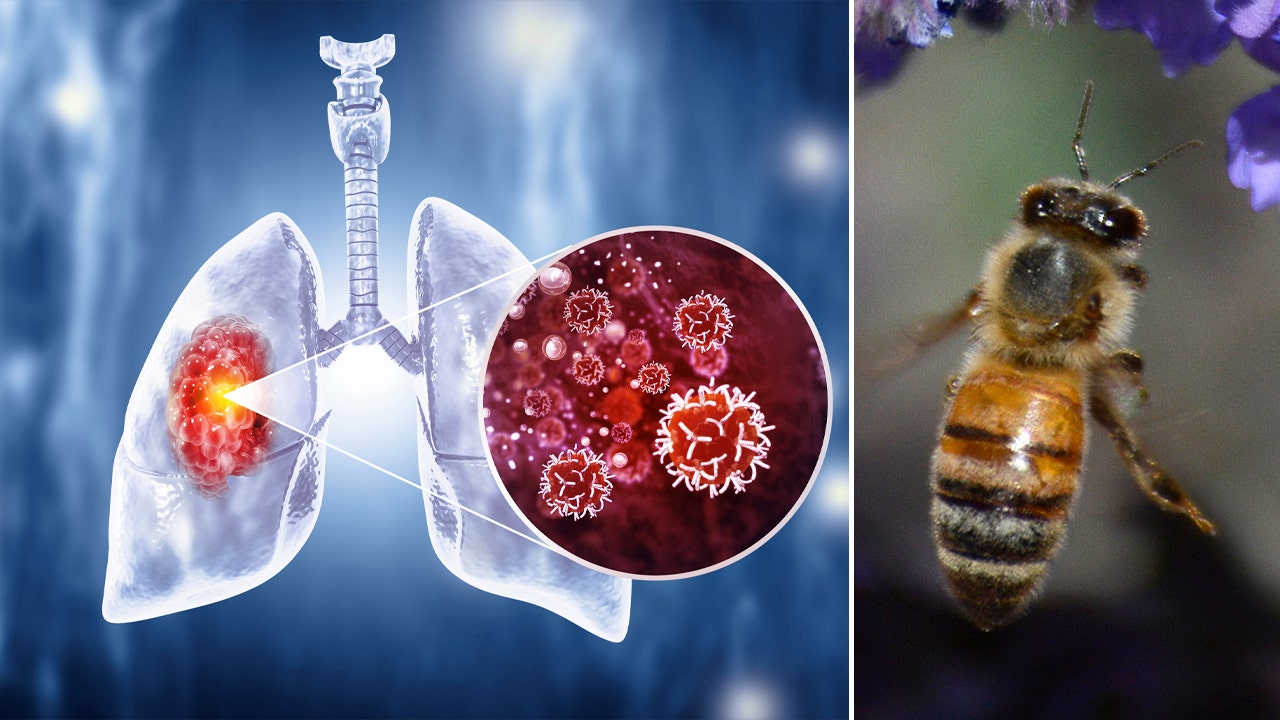
What happens when you pair honeybees and halitosis? Potentially a life-saving new method to screen for cancer, according to one study.
Researchers at Michigan State University have learned that honeybees can detect chemicals associated with lung cancer in human breath. The insects were able to sniff out human lung cancer biomarkers with a remarkable 82% success rate, according to a study published in the journal Biosensors and Bioelectronics.
“These results indicate that the honeybee olfactory system can be used as a sensitive biological gas sensor to detect human lung cancer,” the study authors wrote.
“Insects have an amazing sense of smell the same way dogs do,” said MSU professor Debajit Saha, according to an MSU news release.
YOUNG VAPER WHO REQUIRED DOUBLE LUNG TRANSPLANT SHARES WARNINGS AS E-CIGARETTE SALES RISE
A honeybee drinking nectar from a flower in Markham, Ontario, Canada. (Creative Touch Imaging Ltd./NurPhoto via Getty Images)
Saha, an assistant professor in the College of Engineering and MSU’s Institute for Quantitative Health Science and Engineering, sought to determine whether honeybees could distinguish chemicals in a healthy person’s breath from that of someone sick with lung cancer.
His team developed a “recipe” for a synthetic breath mixture that contained six compounds present in the breath of someone with cancer and a synthetic “healthy” breath mixture.
“It took a steady hand to create the recipe,” said Elyssa Cox, Saha’s former lab manager. “We tested the synthetic lung cancer versus healthy human breath mixtures on approximately 20 bees.”
The researchers placed each live bee in a custom 3D-printed harness and attached a tiny electrode to its brain to measure activity.
SOME BREAST CANCER PATIENTS COULD BE AT RISK OF ANOTHER TYPE OF CANCER, STUDY REVEALS
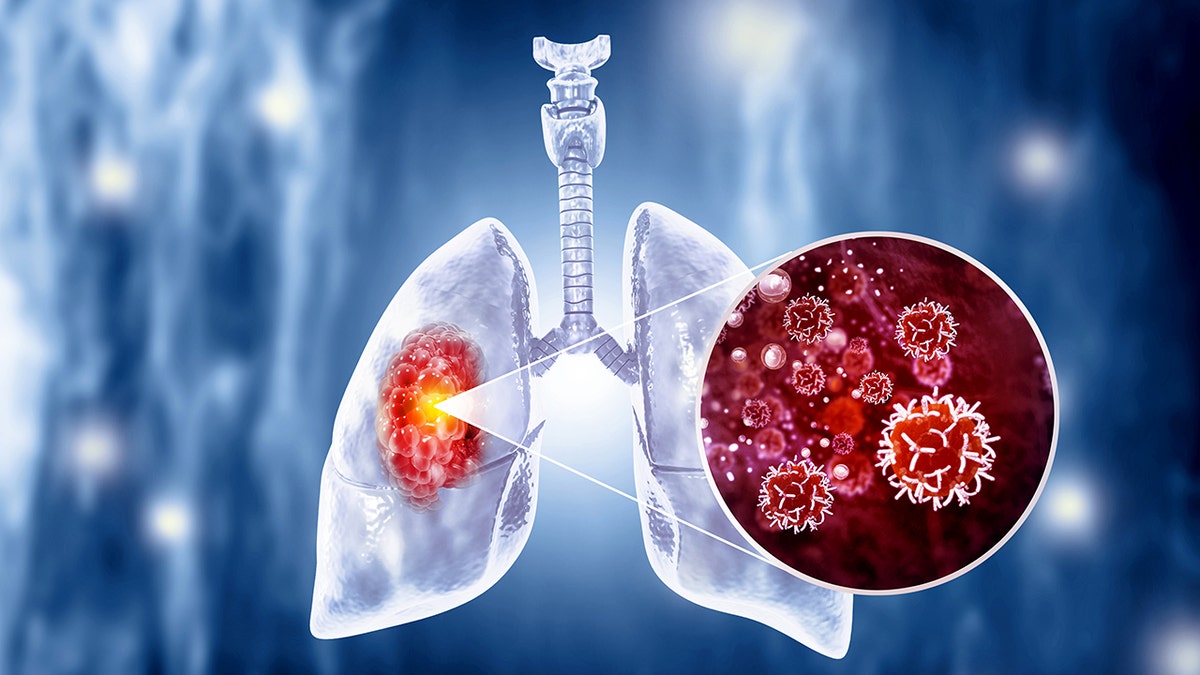
Lung cancer is the leading cause of cancer death worldwide. An estimated 235,580 people will be diagnosed with lung cancer in 2024 in the U.S., according to the Lung Cancer Research Foundation. (Mohammed Haneefa Nizamudeen/iStock)
“We pass those odors on to the antenna of the honeybees and recorded the neural signals from their brain,” said Saha. “We see a change in the honeybee’s neural firing response.”
The researchers found that the bees were able to detect the cancer-indicating compounds even in small amounts.
“The honeybees detected very small concentrations; it was a very strong result,” said Saha. “Bees can differentiate between minute changes in the chemical concentrations of the breath mixture, which is in the parts per 1 billion range.”
The bees also could tell the difference between the synthetic lung cancer breath and healthy breath.
UK TO INTRODUCE BILL TO PHASE OUT LEGAL SALE OF TOBACCO
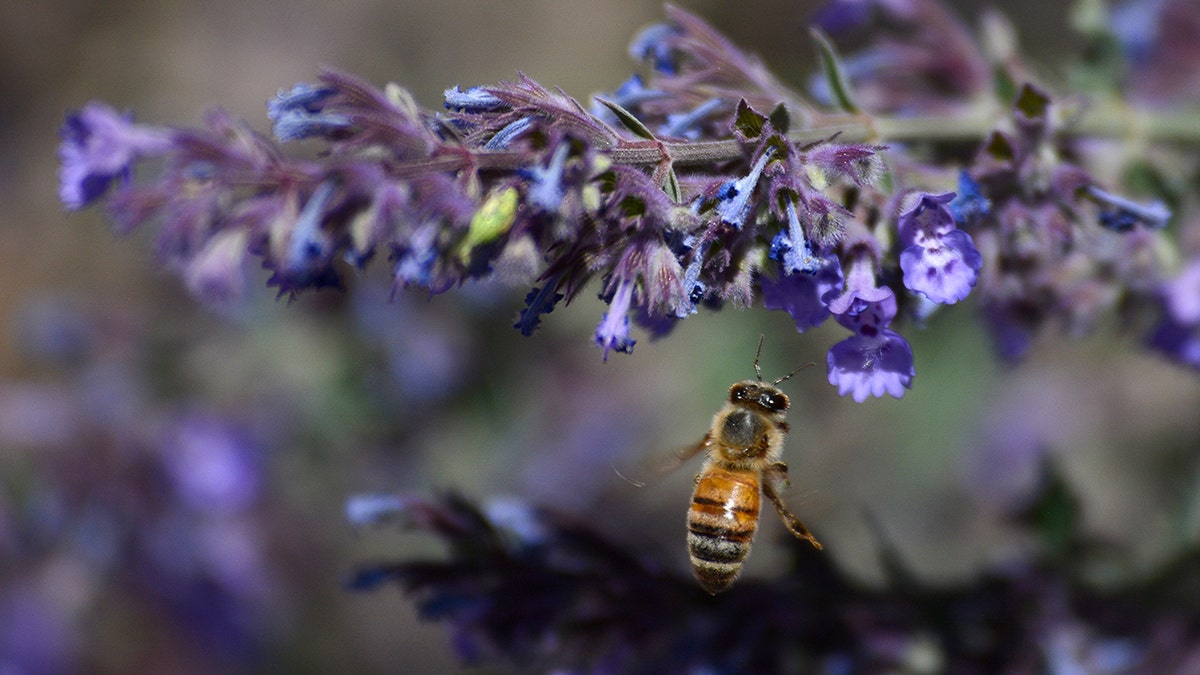
A honey bee visits a blooming catmint plant growing in Santa Fe, New Mexico. (Robert Alexander/Getty Images)
Scientists hope this research will lead to the development of a sensor based on a honeybee brain that can be used to test human breath for the presence of lung cancer.
“What’s amazing is the honeybees’ ability to not only detect cancer cells, but also distinguish between cell lines of various types of lung cancer,” said Autumn McLane-Svoboda, a graduate student on Saha’s team. “The future implications for this are huge, as our sensor could allow for patients to receive specific cancer diagnoses quickly, which is imperative for correct treatment routes.”
Lung cancer is the leading cause of cancer death worldwide. An estimated 235,580 people will be diagnosed with lung cancer in 2024 in the U.S., according to the Lung Cancer Research Foundation.
Smoking is the leading risk factor for lung cancer and is responsible for 80% of lung cancer deaths.
Early detection of high-risk lung cancer can reduce the chance of death by up to 20%.
Health
COVID vaccine companies told to focus on KP.2 variant for fall shots, per FDA announcement

The U.S. Food and Drug Administration (FDA) has recommended that COVID vaccine manufacturers update their formulas for fall doses, in an attempt to target the KP.2 strain of the JN.1 variant.
The Thursday announcement came just a week after the agency’s Vaccines and Related Biological Products Advisory Committee (VRBPAC) voted to recommend a “monovalent JN.1-lineage vaccine” at its June 5 meeting.
As of the end of March 2024, the KP.2 variant was responsible for just 4% of infections in the U.S., according to the COVID Data Tracker from the Centers for Disease Control and Prevention (CDC).
CDC WARNS OF ‘DUAL MUTANT’ FLU STRAIN THAT COULD EVADE ANTIVIRAL DRUGS: ‘NEED TO CLOSELY MONITOR’
Meanwhile, over 50% of infections at that time were attributed to its parental strain, JN.1.
Just a few weeks later, KP.2 is now the cause of around 28% of infections, while the JN.1 variants have largely dropped in prevalence, the tracker shows.
The U.S. Food and Drug Administration has recommended that COVID vaccine manufacturers update their formulas for fall doses, in an attempt to target the KP.2 strain of the JN.1 variant. (iStock)
Dr. Marc Siegel, clinical professor of medicine at NYU Langone Medical Center and a Fox News medical contributor, recently spoke with Dr. Peter Marks, director of the Center for Biologics Evaluation and Research (CBER) at the Food and Drug Administration, about the new vaccine formulations.
“It makes sense to target the KP.2 strain because it is becoming the predominant strain — it is surging in California and will spread across the country,” Siegel told Fox News Digital.

KP.2 is now the cause of around 28% of infections, while the JN.1 variants have largely dropped in prevalence, CDC Tracker data shows. (iStock)
The KP.2 strain is “highly immunoevasive,” the doctor warned — which means that immunity from previous variants and subvariants don’t offer much protection.
COVID-FLU COMBO VACCINE SHOWS ‘POSITIVE’ RESULTS IN PHASE 3 TRIALS, MODERNA SAYS: A ‘TWO-FOR’ OPTION
“On the other hand, the vaccine will cause a production of immune cells and antibodies that will continue to protect you against previous variants and subvariants,” Siegel added.

The updated vaccine is especially important for high-risk groups, those who have chronic illnesses, the elderly and anyone who comes in contact with them, according to doctors. (iStock)
It is especially important for high-risk groups, those who have chronic illnesses, the elderly and anyone who comes in contact with them, according to the doctor.
CLICK HERE TO SIGN UP FOR OUR HEALTH NEWSLETTER
In a statement to Fox News Digital, vaccine maker Novavax — which makes protein-based vaccines — said the company “just filed” its application for a JN.1 COVID vaccine.
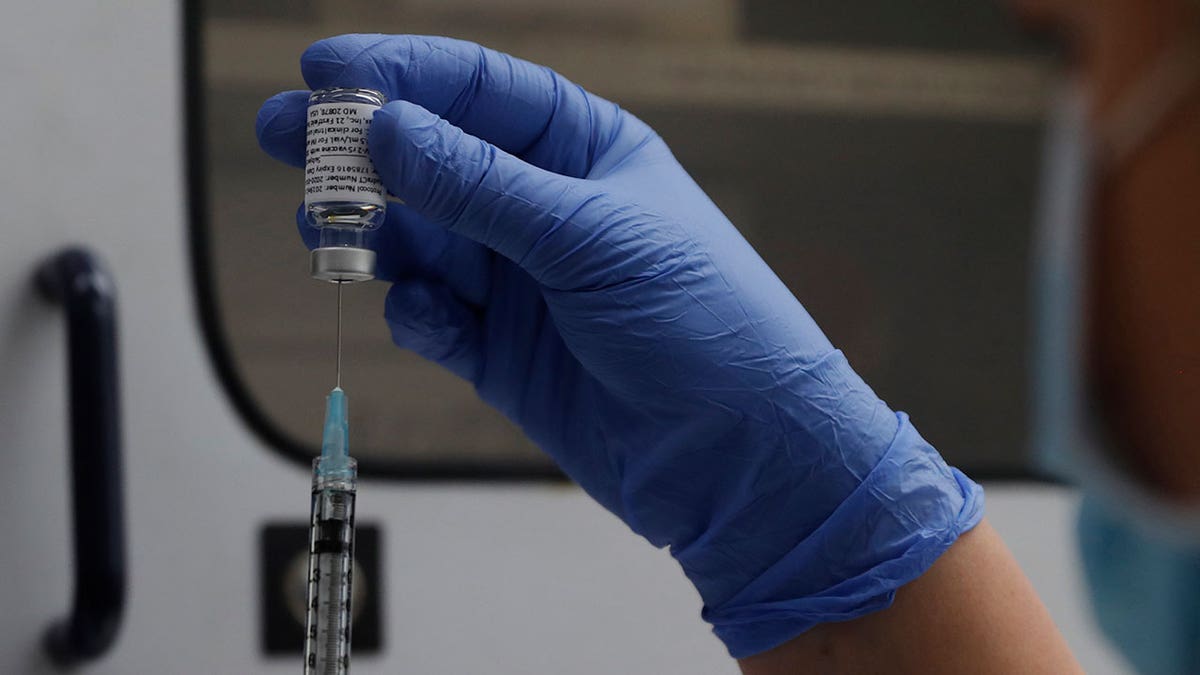
A vial of the Phase 3 Novavax coronavirus vaccine is seen ready for use in the trial at St. George’s University hospital in London, on Oct. 7, 2020. (AP Photo/Alastair Grant, File)
“Novavax’s updated JN.1 COVID-19 vaccine is active against current circulating strains, including KP.2 and KP.3,” the company said in a press release.
“The submission is in line with guidance from the U.S. FDA, European Medicines Agency (EMA) and the World Health Organization (WHO) to target the JN.1 lineage this fall.”
For more Health articles, visit www.foxnews/health.
Fox News Digital reached out to Pfizer and Moderna — both of which produce mRNA-based vaccines — requesting comment on their plans for fall formulations.
-

 News1 week ago
News1 week agoIsrael used a U.S.-made bomb in a deadly U.N. school strike in Gaza
-

 World1 week ago
World1 week agoFrance to provide Ukraine with its Mirage combat aircraft
-

 World1 week ago
World1 week agoRussia-Ukraine war: List of key events, day 833
-

 Movie Reviews1 week ago
Movie Reviews1 week agoInsane Like Me? – Review | Vampire Horror Movie | Heaven of Horror
-

 News1 week ago
News1 week agoNonprofit CFO Accused of 'Simply Astonishing' Fraud
-

 Politics1 week ago
Politics1 week agoGeorge Clooney called White House to complain about Biden’s criticism of ICC and defend wife’s work: report
-

 Politics1 week ago
Politics1 week agoNewson, Dem leaders try to negotiate Prop 47 reform off California ballots, as GOP wants to let voters decide
-

 World1 week ago
World1 week ago‘Bloody policies’: Bodies of 11 refugees and migrants recovered off Libya


















